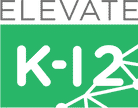The benefits of small-group instruction for all grade levels lie in its ability to cater to individual needs, promote active participation, and create a supportive learning community.
This customized educational strategy is not just a passing trend — it’s a powerful tool revolutionizing how we engage with students and elevate their learning experiences. Let’s dive deeper into small-group instruction and explore the most significant benefits of this approach.
What Is Small-Group Instruction?
Small-group instruction is a type of differentiated instruction that prioritizes each student’s attention, capabilities, and needs. Implementing this teaching method involves grouping students based on their learning needs and other factors. The approach allows educators to customize lessons and activities to meet goals and enhance specific skills.
Embracing small-group learning in education brings a level of individualized attention that traditional whole-group methods cannot match. This approach recognizes and celebrates the uniqueness of each student, offering a tailored learning experience.
For example, small-group instruction is more accessible to neurodivergent students who may learn differently than their neurotypical peers. How these students process and prioritize information may go against the grain in typical learning environments, making it harder for them to reach their full potential.
By dividing classrooms into smaller, more intimate settings, educators provide targeted support, foster deep engagement, and cultivate a collaborative atmosphere where every student can thrive.
The Key Benefits of Using Small-Group Instruction in Education
Small-group learning has many benefits that traditional whole-group instruction cannot offer. Teaching a whole class at once is a one-size-fits-all approach that may leave some students behind and bore others.
Here are a few more examples of the benefits of small-group instruction over more traditional methods:
- Students receive individualized instruction from teachers.
- Lessons are tailored to match each student’s interests, abilities, or learning styles.
- Students are more likely to actively engage with lessons.
- Teachers see enhanced collaboration and communication skills among students.
- Teachers can more easily support students with diverse needs.
- Students have more opportunities to ask questions and receive direct feedback.
The benefits of small-group instruction transcend grade levels. It’s a versatile and effective educational approach from kindergarten through high school and beyond. In elementary grades, small-group settings allow for targeted interventions to address specific student needs.
As we look more closely at these benefits, we’ll see why small-group instruction has become more prominent in modern learning environments.
Enhanced Personalized Learning
One of the most essential benefits of small-group instruction over teaching a whole class at once is the option to address each student’s individual learning needs.
For example, a first-grade teacher might form small reading groups to more accurately assess each child’s reading level and provide additional support. The teacher can also provide tailored instruction, whether focusing on phonics for emerging readers or diving into more complex reading comprehension skills for advanced readers.
By breaking down the class into smaller groups, teachers can use teaching methods that work best for each student’s strengths, weaknesses, and learning styles. This tailored approach enhances personalized learning and empowers students. They learn to love learning rather than dreading it.
Better Student Engagement and Participation
Imagine a classroom where every voice is heard, and every idea is explored. Small-group settings make this teaching style possible. Students are more likely to engage actively in discussions, share insights, and collaborate on projects when they feel seen and valued.
No matter the student’s grade level, small-group work helps students focus, and it is more accessible for those unlikely to speak up in large groups. This heightened participation leads to a deeper understanding and better retention of concepts. In short, students of all ages learn better when they are engaged and active participants in the classroom.
Improved Collaboration and Social Skills
Learning doesn’t occur in a vacuum — it thrives in collaborative environments. According to research, peer learning is an effective strategy for helping students process and learn complex information. It’s also associated with better learning outcomes.
Small-group instruction provides the perfect environment for peer-to-peer learning. Students can work together on teamwork, communication, and problem-solving skills. By working closely with their peers, students also learn about diverse perspectives and respect the ideas of others.
In middle school and high school, small-group instruction fosters deeper engagement with materials, collaboration among students, and improved social skills. In subjects like math, small groups provide an opportunity for peer-to-peer learning. Students explain concepts to each other and work through problems.
This approach not only enhances understanding but cultivates communication and teamwork skills.
Immediate Feedback and Support
One of the most valuable parts of small-group instruction is the instant feedback loop. Students can receive feedback and guidance from teachers immediately instead of waiting days or weeks for graded papers and performance reviews. Teachers can correct mistakes or misconceptions in real time. This deepens students’ understanding right away. At the same time, educators can more quickly see where students are struggling and provide extra help.
Students also receive support from their peers. Fellow students become a part of the learning process as those further along in a subject can help others understand the material. This kind of peer-to-peer learning is beneficial for both the student learning and the student teaching.
Focus on Diverse Learning Needs
Every student is unique, and small-group instruction recognizes and celebrates these differences. This includes adapting the pace of a lesson, providing alternative materials, or offering a different kind of assessment. This approach ensures every student has the opportunity to learn and understand.
Elevate K-12’s small-group offerings exemplify this commitment to customization by tailoring sessions to suit the needs of every learner. This allows educators to create an inclusive learning environment where every student can flourish.
Visual learners may benefit from hands-on activities or visual aids, while auditory learners might excel in discussion-based sessions. Kinesthetic learners may do best with interactive lessons that allow movement and exploration.
Small-group instruction lets educators cater to individual students and their learning styles. Students have a better chance of understanding the material and can improve on specific skills.
How To Implement Small Group Instruction for Student Learning
Effectively incorporating this student-centered approach into teaching strategies requires thoughtful planning. It takes strategy to create balanced groups and develop engaging activities for each one. It’s also important to have clear goals and monitor student progress. By following the steps below, educators can transform their teaching methods and successfully engage all students.
Set Clear Objectives
Before diving into a small-group session, it’s crucial to establish clear, measurable goals. These goals guide both teachers and students. Clarifying these goals ensures that every minute spent in the small group is purposeful and productive.
It’s essential to remember that the objectives for small groups aren’t all based on academic performance. The benefits of this learning model include improved collaboration and communication skills, as well as better social skills. Remember all of this when setting goals.
Create Balanced Groups
Forming productive groups requires a delicate balance. In many ways, it’s more an art form than a science. Consider the abilities, learning styles, and social skills of all group members.
A balanced group goes well beyond putting students with similar test scores together. It consists of students who complement each other, fostering an environment where collaboration thrives, and each member contributes meaningfully to the collective learning experience.
Design Engaging Activities
Small-group instruction opens the door to interactive, dynamic learning experiences. Lesson plans might incorporate hands-on experiments, lively debates, group discussions, or other group activities. With small-group learning, educators can design activities that cater to each group’s specific goals. This makes learning more enjoyable and relevant. Teachers can spark curiosity in their students and ignite a passion for knowledge.
Monitor and Assess Progress
Assessment shouldn’t be an afterthought — it’s an integral part of small-group instruction. Regularly monitoring students’ progress lets educators track growth and identify strengths and weaknesses.
As the lessons continue, the goals may shift and change based on student outcomes. For example, it might become apparent that a small group of students is more advanced and needs more challenging lessons. Continuously monitoring and assessing progress helps guide these required changes.
Realize the Power of Small-Group Instruction With Elevate K-12
Small-group instruction offers a personalized learning experience that caters to each student’s needs. This leads to increased engagement, collaboration, and academic growth. Educators who embrace this student-centered approach recognize its ability to unlock the full potential of every learner and create a supportive learning environment.
Elevate K-12 offers tailored small-group solutions with LIVE instruction that enhances learning experiences so every student can reach their full potential.
To learn more about the transformative impact of small group instruction, check out Elevate K-12 today.

